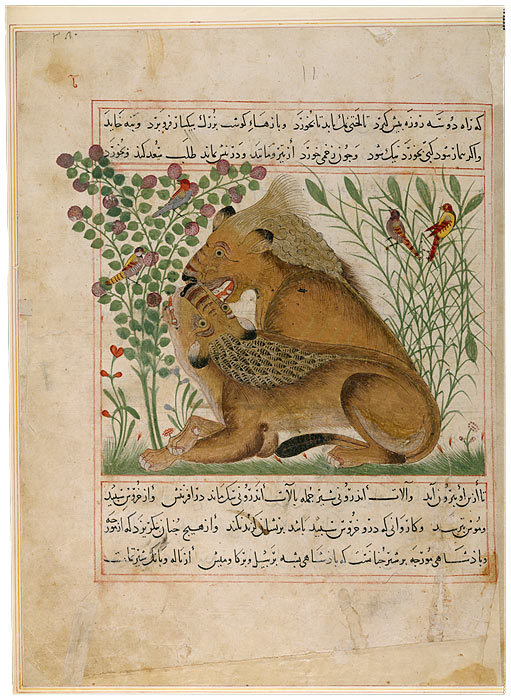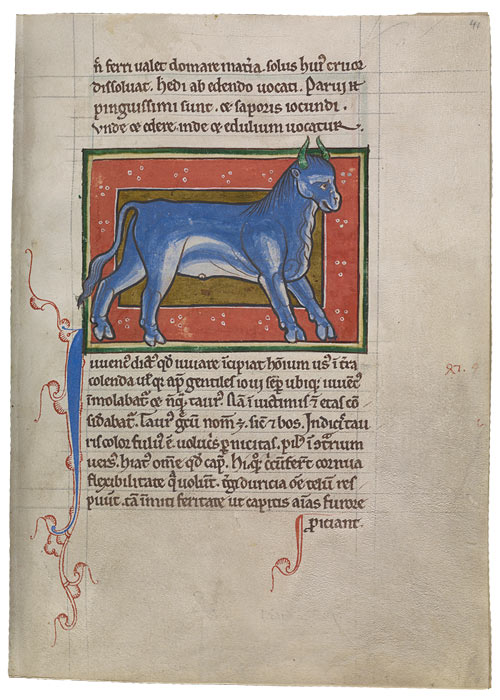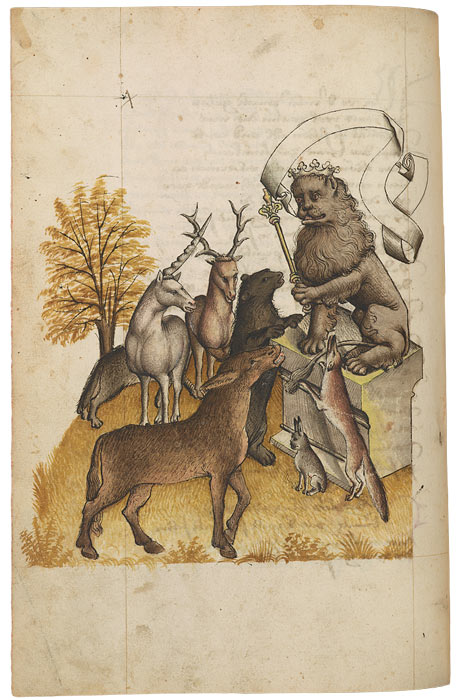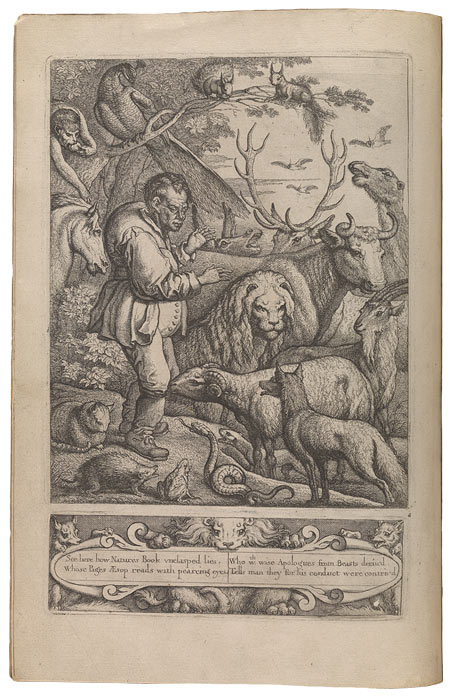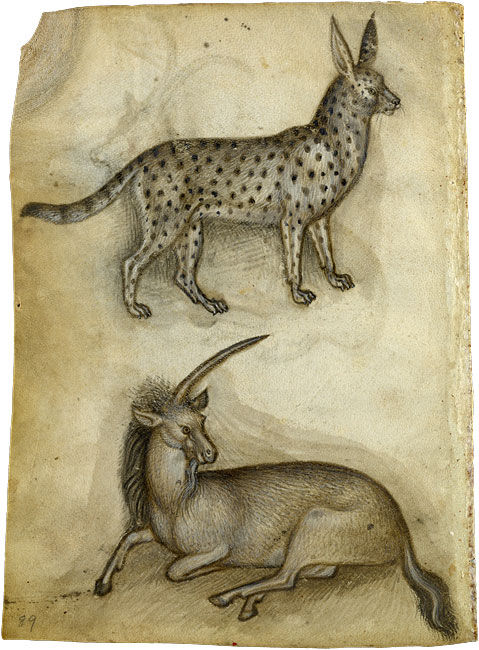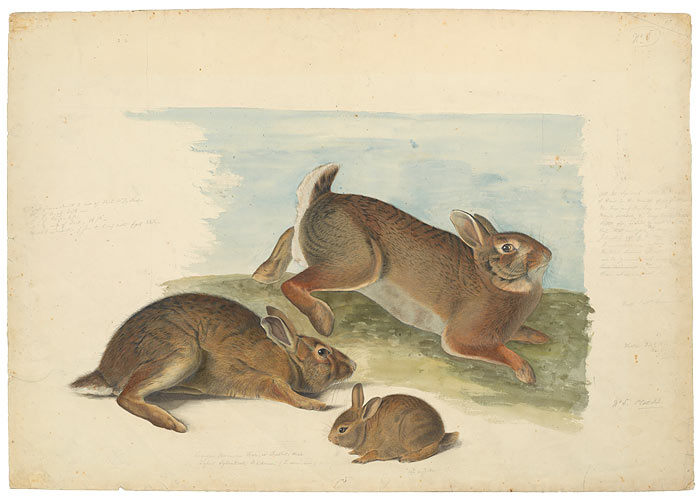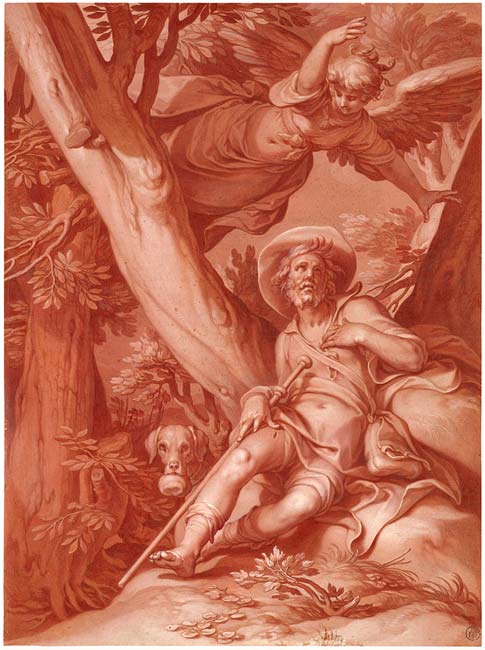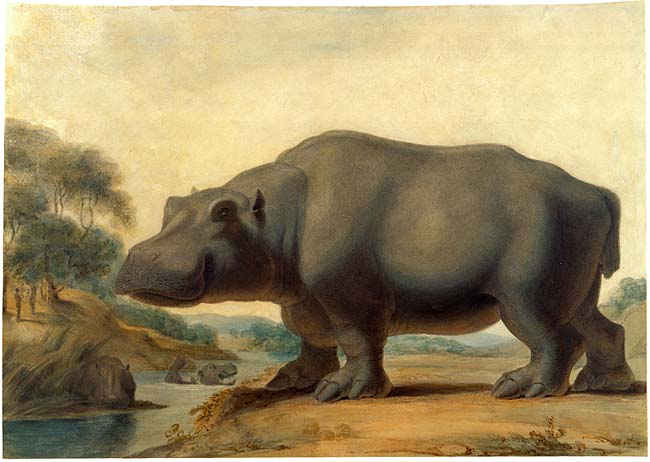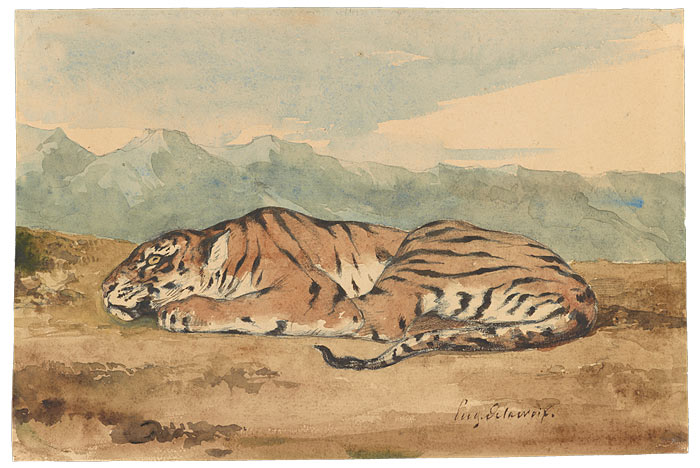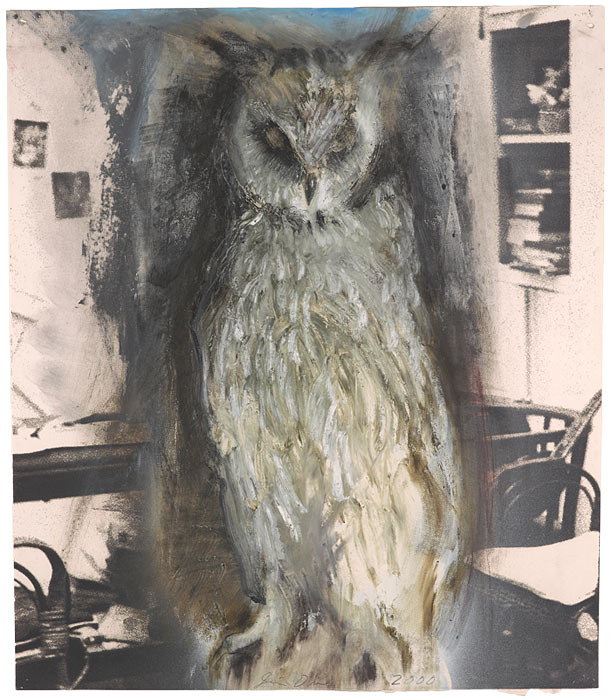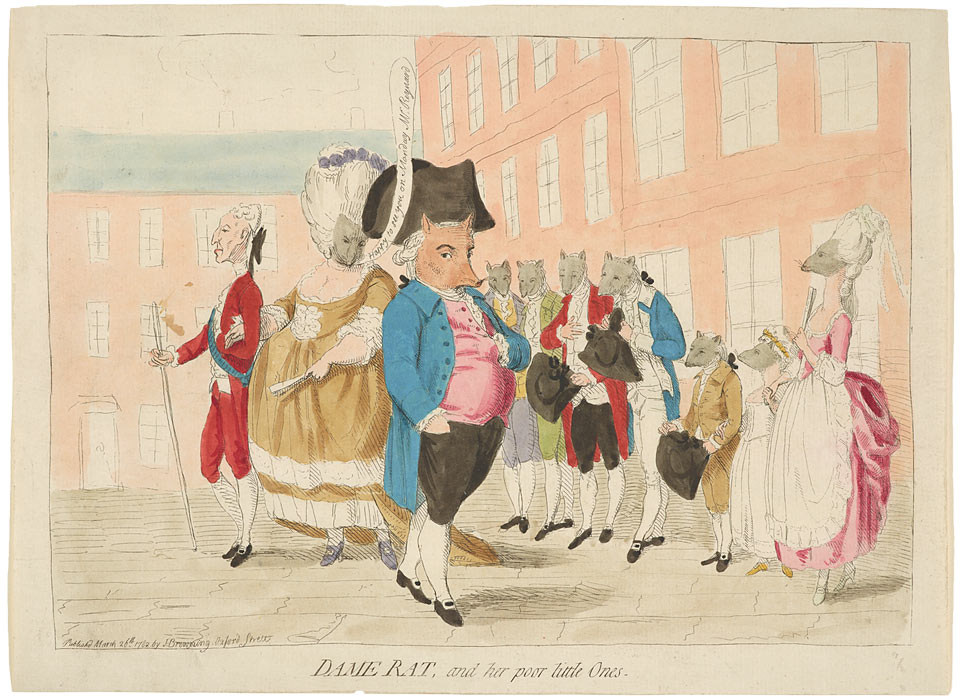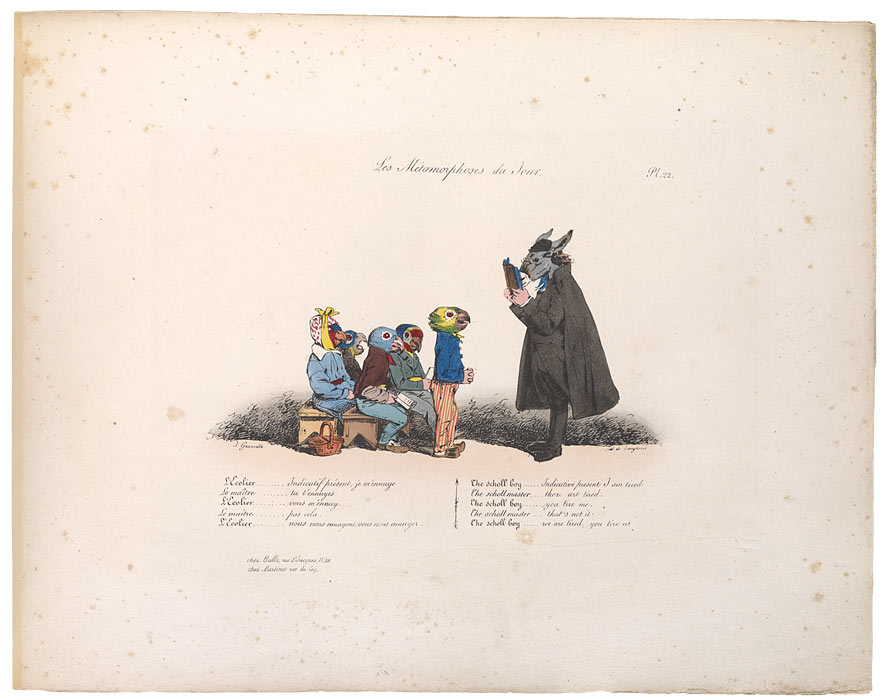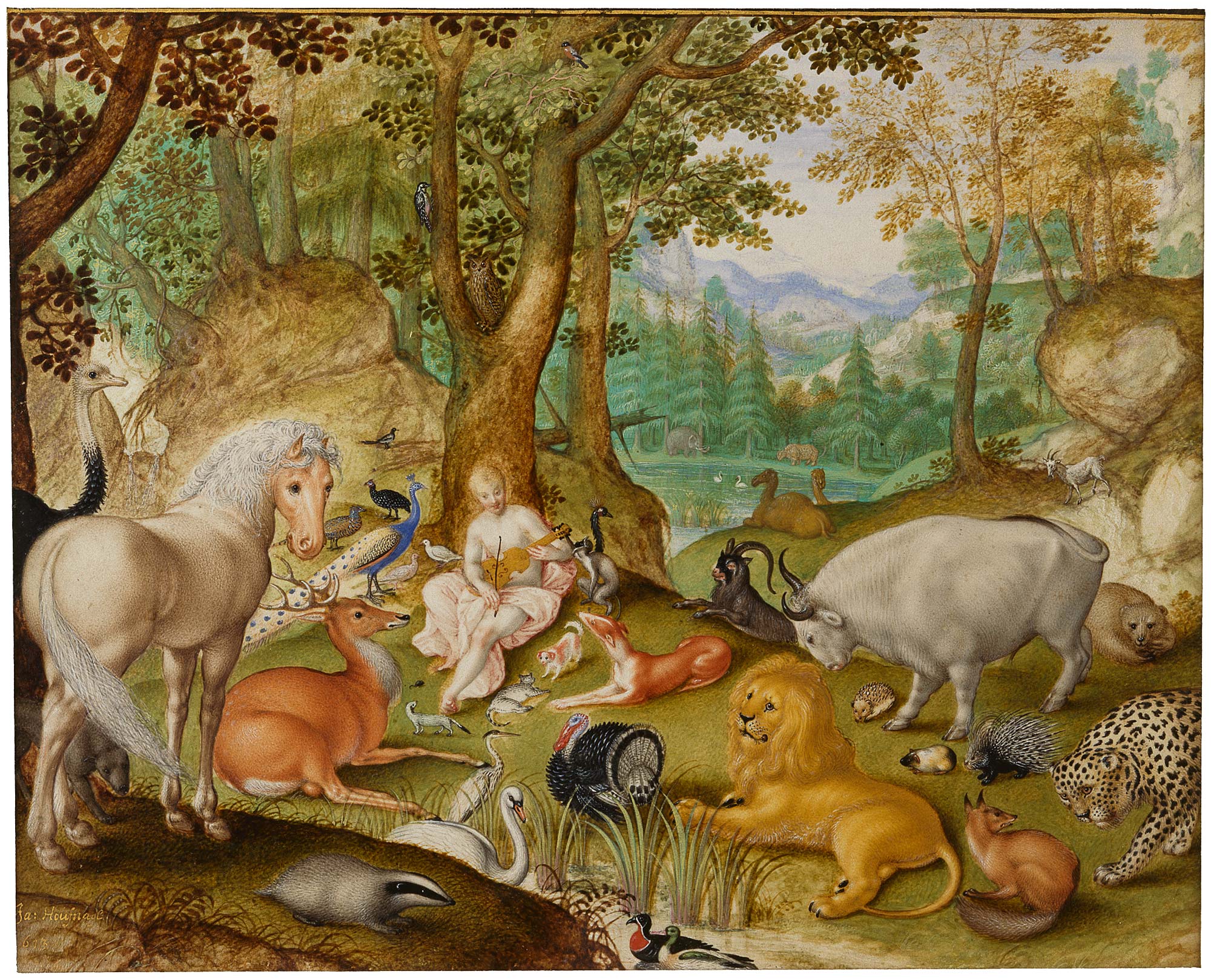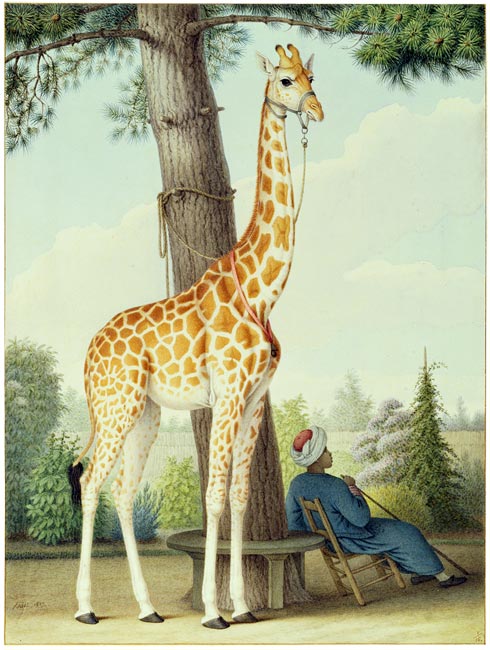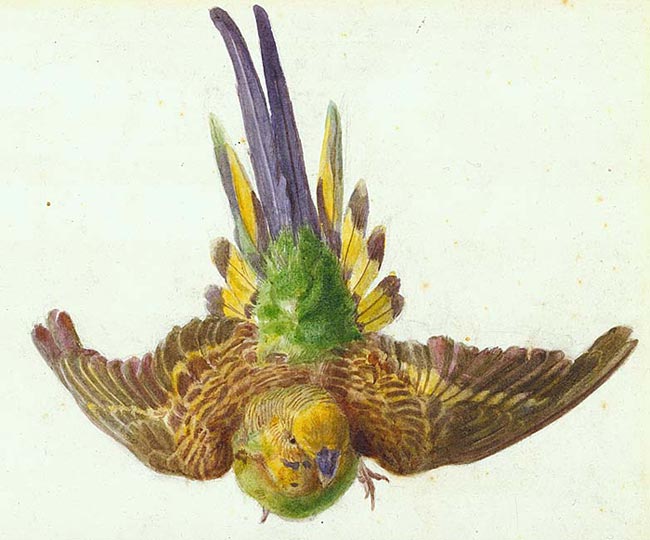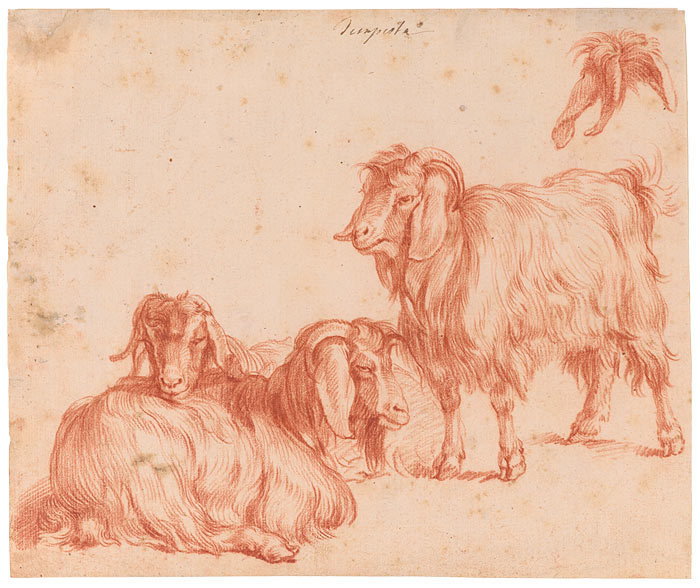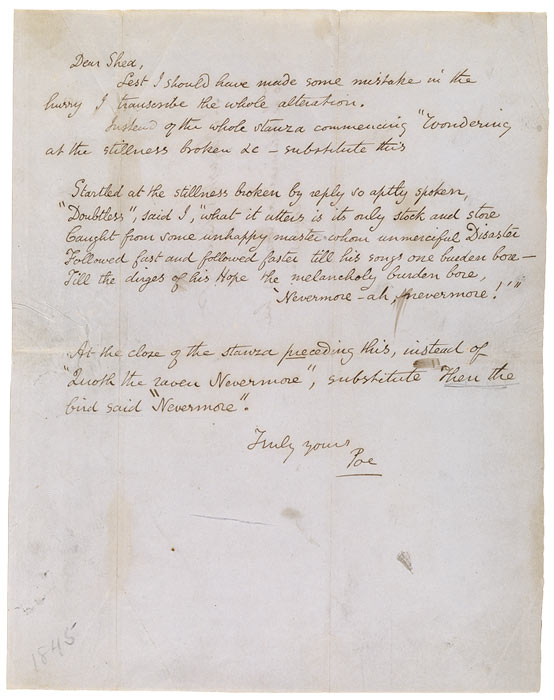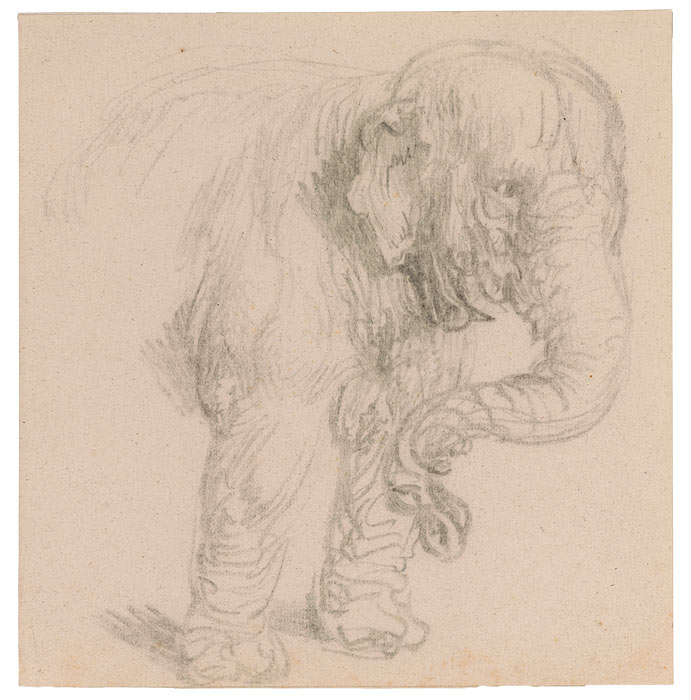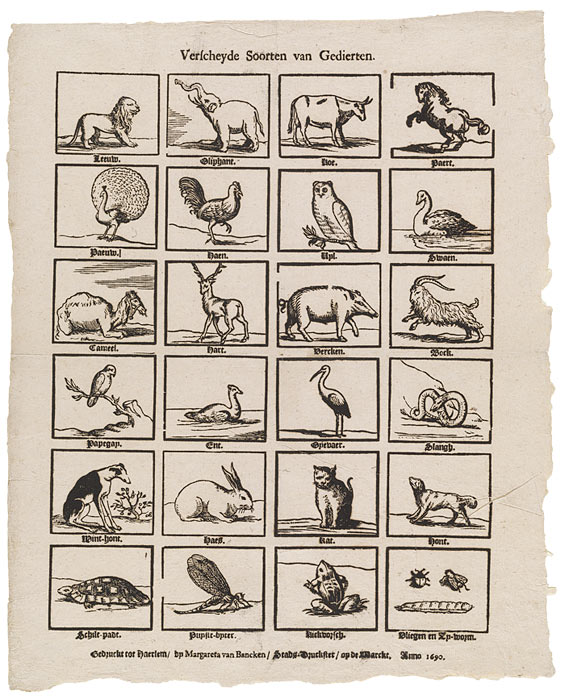The King of Animals
One of the most beautiful of all surviving Persian manuscripts, this work describes the nature of humans, animals, birds, reptiles, fish, and insects as well as the medicinal properties and benefits of their various parts. The lion, according to the text, "is the strongest and most powerful" animal, yet "he is afraid of a white rooster and a mouse.... He flees from nothing as he does from a little ant." When he senses he is being followed by a hunter, "he effaces his footprints behind him with the end of his tail." As for the lion's medicinal benefits, "the tooth of a lion tied on a child makes teething easy."
Plan your visit. 225 Madison Avenue at 36th Street, New York, NY 10016.
Plan your visit. 225 Madison Avenue at 36th Street, New York, NY 10016.
Selected Images
MS M.500 (fol. 11r)
Abu Sa'd' Ubayd-Allah ibn Ibrahim, known as Ibn Bakhtishu (d. 1058), Manāfi˓-i al-ḥayavā (The Benefits of Animals), in Persian , Between 1297 and 1300, Purchased by Pierpont Morgan, 1912 , MS M.500 (fol. 11r)
MS M.81
Worksop Bestiary, in Latin , Before 1187, Purchased by Pierpont Morgan, 1902 , MS M.81
A Book of Beasts
The bestiary, a collection of animal descriptions interspersed with biblical comparisons and moral tales, was a popular text in the Middle Ages. It is an adaptation of an earlier Greek work, the Physiologus. This manuscript is one of the earliest with fully painted pictures. " The ox is noted for its kindness to other oxen, "for each of them demands the company of that other one with whom he has been accustomed to draw the plough by the neck."
MS M.763
Hugo von Trimberg (ca. 1230–ca. 1313), Der Renner, in German , Last quarter of the 15th century, Purchased in 1930 , MS M.763
The Lion and the Donkey
This lengthy poem, a collection of allegorical and moralizing tales drawn from the Bible, Aesop, bestiaries, and other sources, is titled Der Renner (The Runner), as Trimberg intended it to travel throughout Germany. In the image on the left, the lion has been elected king of the animals and has assembled them to report to him their names and ancestries. Attempting to hide his humble origins, the donkey is cagey about his lineage. The fox finally speaks up and reveals that the donkey owned by the baker is the donkey's father: "faithfulness and simplicity dwell in [his father], and he supports himself by honest toil and to no one does any harm." There is no shame in admitting one's humble origins.
Aesop's Fables
Aesop's Fables with His Life: in English, French & Latin , Gift of Ruth J. Heffelfinger, 1974 , PML 64797
Aesop and the Animals
Although Aesop is credited with many of the fables that are still known today—The Tortoise and the Hare, for example—no writings directly from the Greek storyteller's hand survive. This legendary edition of the fables was lavishly illustrated by Francis Barlow, one of the most accomplished animal and bird painters in seventeenth-century England. The left-hand page of the book depicts Aesop among the animals, his closeness to them confirming his reputation as the best interpreter of their thoughts and motivations: "See here how Nature's Book unclasped lies / Whose pages Aesop reads with pearcing eyes."
Anonymous, Italian School
Anonymous, Italian School 15th century, Lynx and a Recumbent Unicorn , Brush in brown, white and black tempera, on vellum, Purchased by Pierpont Morgan, 1909 , I, 82
A Page From a Medieval Model Book
Unsure what a lynx looks like? If you were a medieval artist, a model book like this one would have been the place to check. Model books were essential reference works for medieval artists who wished to depict animals. Rendered in careful detail, the animals appear in profile, in static positions devoid of background. They were drawn generally not from life but copied from earlier depictions in older model books or works of art, as is obviously the case with the unicorn. Even more than one hundred years later, the unicorn was believed to exist.
John James Audubon
John James Audubon (1785–1851), Gray Rabbit: Old Male, Female, and Young , 19th century, Watercolor and graphite, with gouachePurchased by Pierpont Morgan, 1910 , 1976.12:4
Audubon's Rabbit
This drawing is a preparatory study for an image that appears in The Viviparous Quadrupeds of North America (1845–48). The text accompanying the image comments on the rabbit's pesky habits: "It often makes inroads upon the kitchen-garden, feasting on the young green peas, lettuces, cabbages, &c., and doing a great deal of mischief." On the verso of this drawing, Audubon wrote a very personal note: "I drew this Hare during one of the days of deepest sorrow I have felt in my life, and my only solace was derived from my Labour. This morning our beloved Daughter [-in-Law] Eliza died."
Abraham Bloemaert
Abraham Bloemaert (1566–1651), St. Roch , Red gouache, heightened with white gouache, over traces of black chalk, and possibly some pen and ink and wash, Gift of J. P. Morgan, Jr., 1924 , I, 229b
The present drawing is a unique example of the red monochrome—or rosaille—technique in Bloemaert’s graphic oeuvre. He used a mixture of opaque lead white and red chalk to create a full spectrum between red and white. Infrared reflectography reveals a complete and precise black chalk underdrawing that nearly corresponds to the gouache composition. This highly finished sheet was clearly conceived as an independent work of art and was possibly a devotional piece. St. Roch was the patron saint of plague sufferers.
St. Roch's Faithful Dog
St. Roch, the patron saint of plague sufferers, is shown here in all his agony. Resting at the base of a tree, a wound on his leg and the pain evident in his face, he is watched over by an angel. His only companion is a dog, who has brought him some bread. The legend is that this dog—in some versions, the dog was St. Roch's, and in others, the dog belonged to a local nobleman—brought bread every day and licked his wounds to heal them.
Samuel Daniell
Samuel Daniell (1775–1811), Hippopotamus , Watercolor, over graphite, Purchased as a gift of Mrs. Peter McBean , 1977.28
This drawing was preparatory for plate 12 of Daniell's African Scenery and Animals, published in London in 1804. Samuel Daniell traveled to South Africa in late 1799 during the first British occupation. Two years later he was appointed secretary and draftsman of a government trading mission sent to Bechuanaland, in the interior. The present drawing was originated on this six-month-long expedition, during which Daniell sketched and recorded views of indigenous animals in their natural habitats, to be worked up later into finished drawings.
Hippopotamus From Botswana
The English painter Samuel Daniell traveled to South Africa in late 1799, during the first British occupation. Two years later he was appointed secretary and draftsman of a government trading mission sent to Bechuanaland, now Botswana. The present drawing was done on this six-month-long expedition, during which Daniell sketched and recorded views of indigenous animals in their natural habitats. This hippo, who dominates his surroundings, appears in Daniell's book African Scenery and Animals, published in 1804.
Ferdinand Eugène Victor Delacroix
Eugène Delacroix (1798–1863), Royal Tiger , Pen and brown ink, and watercolor, over graphite, Thaw Collection , 2006.54
Tiger Tiger
The French artist Delacroix was drawn to exotic cats. "Tigers, panthers, jaguars, lions, etc. Why is it that these things have stirred me so much? Can it be because I have gone outside the everyday thoughts that are my world; away from the street that is my entire universe?" The first living royal, or Bengal, tiger arrived in Paris in 1831, and Delacroix and his good friend Barye, the animal sculptor, often visited the menagerie at the Jardin des Plantes to observe the majestic creature.
James Gillray
James Gillray (1756–1815), Dame Rat, and Her Poor Little Ones , Bequest of Gordon N. Ray, 1987 , 1986.172
FOX AND RATS
The English caricaturist James Gillray often used animals to convey the prevailing opinions of the day. The central figure here is one of Gillray's repeated targets, the prominent politician Charles Fox. He stands with his back to Lord Hertford, who ignores him, while Hertford's rat-headed wife and children greet him. A new government meant that Hertford was forced to resign his post as lord chamberlain, the organizer of official functions for the royal household. The newspapers accused Lady Hertford of trying to curry favor with Fox. Rats, like foxes, were thought to be cunning and duplicitous.
J. J. Grandville
J. J. Grandville (1803–1847), Les métamorphoses du jour , Bequest of Gordon N. Ray, 1987 , PML 140303
Schoolchildren and Teacher
This hand-colored book was the publication that brought the French caricaturist J. J. Grandville to prominence. The seventy scenes of humans with animal faces playing out scenes from Parisian middle-class life highlight society's absurdities. Here the parrot children, who are meant to demonstrate their rote learning of verbs, respond to their donkey teacher, his nose buried in the book, with a cheeky reply: "we are tired; you tire us."
Jacob Hoefnagel
Court painter to Rudolf II in Prague from 1602 to 1613, Hoefnagel specialized in small format mythological scenes on vellum or copper. This drawing is such a work, and its date and exquisite finish suggest that it may have been a courtly commission. The subject was popular in northern European art in the late sixteenth and early seventeenth centuries, reflecting the vogue for encyclopedic representations of nature.
Nicolas Hüet, the Younger
Nicolas Hüet, the Younger (1770–1828), Study of the Giraffe Given to Charles X by the Viceroy of Egypt, 1827 , Watercolor and some gouache, over traces of black chalk, Purchased on the Sunny Crawford von Bülow Fund, 1978 , 1994.1
A Parisian Giraffe and her Caretaker
This drawing, most probably from life, is of the famous nineteenth-century giraffe known as Zarafa with Atir, her Sudanese caretaker. Atir lived with Zarafa for eighteen years in the Jardin des Plantes and "slept within scratching reach of her head." A political gift from the Ottoman viceroy of Egypt, Muhammed Ali, to Charles X of France, the giraffe was part of an attempt to convince the king not to interfere in the war between the Ottoman Empire and the Greeks. Her journey from Sudan to Paris took two years and entailed two boat rides and a 550-mile walk from Marseilles to Paris. It is estimated that over 100,000 people—an eighth of the population of Paris at the time—came to see her.
Edward Lear
Edward Lear (1812–1888), Parakeet in Flight , Watercolor, over some pencil, on wove paper, Gift of Mrs. Vincent Astor , 1977.23
Edward Lear's Bird
The affinity between serious scientific study of animals and flights of the imagination is epitomized by the works of the English artist and writer Edward Lear. Best remembered today for his nonsense poetry, especially the poem The Owl and the Pussycat, Lear began his career as an "ornithological draughtsman" employed by the Zoological Society of London. His first publication, printed when he was nineteen years old, was Illustrations of the Family of Psittacidae, or parrots, in 1830, to which the drawing of the parakeet is likely related.
Pieter Mulier
Pieter Mulier (1637–1701), Two Recumbent Goats and a Third Standing , 17th century, Red chalk, Purchased by Pierpont Morgan, 1910 , III, 219a
Studies Of Farm Animals
The twentieth-century American artist Alexander Calder wrote, "the study of any domestic animal helps in drawing the rarer and wilder ones" Mulier, a Dutch artist who spent much of his life in Italy, has mastered the shaggy coat and penetrating stare of the goat.
Edgar Allan Poe
Edgar Allan Poe (1809–1849), Letter signed Poe: New York, to John Augustus Shea, 3 February 1845. , Purchased by Pierpont Morgan, 1909 , MA 621
Revising "The Raven"
This letter contains Poe's last-minute revisions to the tenth and eleventh stanzas of "The Raven." The poem was to be published the next day in The New-York Daily Tribune. These revisions are the earliest surviving portions of "The Raven" in Poe's hand. In his "Essay on Poetry," Poe wrote that he wanted a creature for this poem that was "capable of speech, and very naturally, a parrot, in the first instance, suggested itself, but was superseded forthwith by a Raven as equally capable of speech, and infinitely more in keeping with the intended tone." The raven, "the bird of ill-omen," represents "Mournful and Never-Ending Remembrance," in this case, of a dead lover.
Rembrandt Harmensz van Rijn
Rembrandt Harmensz van Rijn (1606–1669), Forequarters of an Elephant , ca. 1637, Counterproof in black chalk, Purchased by Pierpont Morgan, 1910 , I, 205
Rembrandt's Elephant
Rembrandt made several elephant sketches. The subject is thought to be a female elephant named Hansken, who traveled from Ceylon to Amsterdam in 1637. The artist paid close attention to the texture of her skin and faithfully depicted her without tusks: female Asian elephants often have small or broken tusks. She stands serenely in this image but was trained to perform various tricks to entertain the crowds who paid to see her. One observer wrote, she "dances in circles, fences an opponent with a sword, kneels... puts on a hat and takes it off."
Verscheyde soorten van gedierten
Verscheyde soorten van gedierten , Purchased on the Ball Fund, 1985 , PML 84761
Affordable Animals
Printed on cheap paper and, at a penny or two, meant to be affordable to the general public, this Dutch catchpenny print from the seventeenth century is in remarkable condition. Printed from twenty-four small woodblocks, the print's diverse animal subjects are meant to be instructive as well as amusing, a child's introduction to natural history. The most exalted exotic animals, the lion and elephant, appear first, followed by the cow and horse, two animals central to artistic depictions of Dutch rural life.

